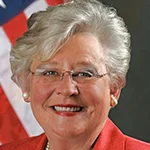 |
| Diego Campal |
Our first response to the coronavirus pandemic (COVID-19) should be, as always, to analyze the context. The pandemic is happening in a world that is more hyper-connected than ever before. The closest precedent is the outbreak of Influenza A - H1N1 in 2009. According to available statistics, the number of people connected to the Internet has more than doubled since then. Today, penetration has reached more than 60 percent at a global level and around 90 percent in developed countries and cities. Never before has communications played such a central role in controlling a situation on a global scale.
Next, it is important to differentiate between crisis communications and risk communications. The first intervenes in situations where the sustainability of an organization is at stake. These are concrete threats, current or imminent, in which communications must define a position and support it. Risk communications has a different approach. Its objective is to prevent future events, about which there is little or no certainty.
A situation such as coronavirus requires combining both approaches, striving for an appropriate balance. Crisis communication addresses threats to the operation of an organization, while risk communication must target employees, clients and other contacts, many of whom are necessary to avoid the complete paralysis of a company. The first seeks to lower the level of conflict, while the second generates a certain level of alert.
The following steps should be part of a communications strategy to deal with the crisis:
- Planning: Define the possible scenarios. In this particular case, the actions to be taken can be aligned and communicated, depending on the different phases of the public health recommendations, which go from containment to mitigation and with isolation recommendations that are intensified in each stage.
- Setting up a crisis committee: Small organizations can adapt more easily to change, larger ones require review of processes, strengthening functions and other operational issues. It is important to form a committee with all the critical areas involved to ensure coordinated and effective action. Always consider having someone as a backup for each function and do not allow the information regarding an issue to known by only one person. This is a pandemic, so it is likely that some people will become sick and must leave their function until they recover.
- Understand the regulations: With an overload of information about the coronavirus, it’s critical that communicators understand what the regulations are, what the official recommendations are and do not make decisions based on rumors or hearsay. When you are clear about the rules, you better understand the scope for action. Organizations can take additional precautionary measures beyond the standards, but it is essential to ensure compliance with those required by regulation.
- Keep in touch with your peers: It is very useful to know the measures that other organizations are adapting, in order to define standards and benchmarks. For this purpose, you can keep in touch with peers from other organizations similar to yours or use information available through chambers and business associations.
- Open fluid channels of internal communications: You must open formal channels of communications for consults and try to talk to employees. An empathetic organization, which knows how to measure the mood of its teams, will be able to understand them better and communicate more efficiently—achieving containment, addressing fears that arise and responding to emotions.
- To be and to appear to be: Communicating well is important, but it is even more important to act accordingly. It is necessary to be emphatic in emphasizing that health is a priority and at the same time put words into action. Show concern, real and genuine, and act by example.
- Give freedom of action: In cases where it is possible, allow employees who prefer to self-isolate and can work remotely, to do so. Avoiding making decisions for others always helps to better contain those who are more concerned and not overly frighten those who are not.
- Trust in technology: Thanks to hyper-communication, many of today's jobs can be performed remotely. Of course, it's never the same as personal contact, but in terms of getting things done, it works. Remember that lower-level employees often don’t have the same level of ability, confidence, or even the physical space, to work as effectively in a remote setting.
- The importance of post-crisis analysis: Many of the measures being taken effectively today are part of the lessons learned from similar situations in the past, such as the H1N1 outbreak. Knowing best practices, as well as doing a good documented analysis once the crisis is over, strengthens the organization.
Communications areas and specialists have a great responsibility towards the efforts to contain this pandemic, both from the public and private sectors. Because misinformation and prejudice are as much enemies of public health as viruses themselves.
***
Diego Campal is regional director of public affairs at JeffreyGroup, the largest agency exclusively focused on servicing multinational companies and brands in Latin America, providing a full range of marketing, corporate communications and public affairs services with a full-time staff of more than 250 employees in seven wholly-owned offices and a network of local agency partners across the region. Among the firm’s current clients are Airbus, American Airlines, Bayer, Facebook, GE, Marriott, PepsiCo, Salesforce, Samsung, and Sony. www.jeffreygroup.com


 Nike finally throws in the towel and admits that its new MLB uniforms are a flop... A good chunk (34 percent) of TikTokers support a ban on the Chinese app.... "Lede of the Week Award" goes to Wall Street Journal reporter Angus Berwick for story abourt John Jacob Astor IV's gold pocket watch.
Nike finally throws in the towel and admits that its new MLB uniforms are a flop... A good chunk (34 percent) of TikTokers support a ban on the Chinese app.... "Lede of the Week Award" goes to Wall Street Journal reporter Angus Berwick for story abourt John Jacob Astor IV's gold pocket watch. Republican tough guys Josh Hawley and Tom Cotton want Biden to send the National Guard to Columbia University to put an end to student protests... Bernie blasts Bibi for insulting America's intelligence by equating criticism of Israel's government with antisemitism... German court convicts former financial PR exec who claims he wasn't aware that trading on tips is illegal.
Republican tough guys Josh Hawley and Tom Cotton want Biden to send the National Guard to Columbia University to put an end to student protests... Bernie blasts Bibi for insulting America's intelligence by equating criticism of Israel's government with antisemitism... German court convicts former financial PR exec who claims he wasn't aware that trading on tips is illegal.  Southern governors claim they know what's best for their working class, and it's not pay raises... A Ukrainian human rights group played a key role in convincing House Speaker Mike Johnson to hold a vote to send arms to Ukraine, Israel and Taiwan... Trump Media & Technology Group blames short-selling and not lousy outlook for its stock slump.
Southern governors claim they know what's best for their working class, and it's not pay raises... A Ukrainian human rights group played a key role in convincing House Speaker Mike Johnson to hold a vote to send arms to Ukraine, Israel and Taiwan... Trump Media & Technology Group blames short-selling and not lousy outlook for its stock slump. The techniques deployed by OJ Simpson's defense team in the 'trial of the century' served as a harbinger for those used by Donald Trump... People worry about the politicization of medical science just as much as they fret about another pandemic, according to Edelman Trust Barometer... Book bans aren't restricted to red states as deep blue Illinois, Connecticut and Maryland challenged at least 100 titles in 2023.
The techniques deployed by OJ Simpson's defense team in the 'trial of the century' served as a harbinger for those used by Donald Trump... People worry about the politicization of medical science just as much as they fret about another pandemic, according to Edelman Trust Barometer... Book bans aren't restricted to red states as deep blue Illinois, Connecticut and Maryland challenged at least 100 titles in 2023. The NBA, which promotes legalized gambling 24/7, seems more than hypocritical for banning player for placing bets... Diocese of Brooklyn promises to issue press release the next time one of its priests is charged with sexual abuse... Truth Social aspires to be one of Donald Trump's iconic American brands, just like Trump University or Trump Steaks or Trump Ice Cubes.
The NBA, which promotes legalized gambling 24/7, seems more than hypocritical for banning player for placing bets... Diocese of Brooklyn promises to issue press release the next time one of its priests is charged with sexual abuse... Truth Social aspires to be one of Donald Trump's iconic American brands, just like Trump University or Trump Steaks or Trump Ice Cubes.


 Have a comment? Send it to
Have a comment? Send it to 
No comments have been submitted for this story yet.